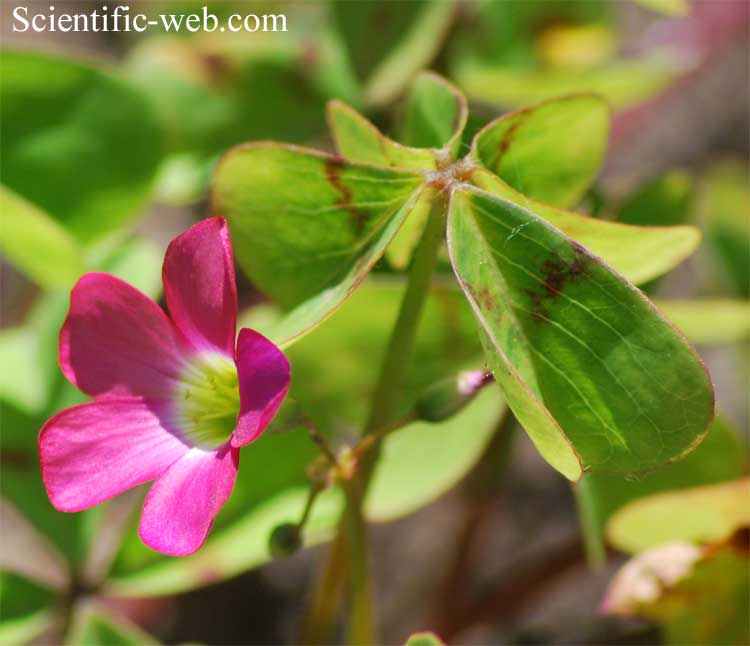
Oxalis tetraphylla , Photo: Michael Lahanas
Classification System: APG IV
Superregnum: Eukaryota
Regnum: Plantae
Cladus: Angiosperms
Cladus: Eudicots
Cladus: Core eudicots
Cladus: Rosids
Cladus: Eurosids I
Ordo: Oxalidales
Familia: Oxalidaceae
Genus: Oxalis
Subgenus: O. subg. Oxalis
Sectio: O. sect. Ionoxalis
Species: Oxalis tetraphylla
Name
Oxalis tetraphylla Cav., Icon. 3(1): 19, t. 237. 1795
Synonymy
Oxalis deppei G.Lodd., Brit. Fl. Gard. II, 1: t. 96 1831.
References
Cavanilles, A.I. 1795–1796. Icones et descriptiones plantarum, quae aut sponte in Hispania crescunt, aut in hortis hospitantur. Vol. III. X + 50 pp,, tab. 201–300. Ex Regia Typographia, Matriti [Madrid]. Biblioteca Digital Reference page. [See page 19, Tab. 237.]
USDA, ARS, Germplasm Resources Information Network. Oxalis tetraphylla in the Germplasm Resources Information Network (GRIN), U.S. Department of Agriculture Agricultural Research Service. Accessed: 09-Oct-10.
Oxalis tetraphylla – Taxon details on National Center for Biotechnology Information (NCBI).
EOL: Oxalis tetraphylla
Vernacular names
Cymraeg: Suran bedair deilen
Deutsch: Glücksklee
English: Four-leaved Sorrel
español: Oxalis de cuatro hojas
suomi: Onnenkäenkaali
français: Oxalis à quatre folioles
日本語: モンカタバミ
lietuvių: Valgomasis kiškiakopūstis
polski: Szczawik czterolistny
русский: Кислица четырёхлистная
svenska: Rosettoxalis
Oxalis tetraphylla (often still traded under its syn. O. deppei) is a bulbous plant from Mexico. A common name is "Iron Cross", after a famous cultivar; it is also known as "lucky clover", and in a wild or feral state as four-leaf sorrel or, least ambiguously, four-leaved pink-sorrel.
It has leaves divided into four and has been called "lucky leaf" and even "four-leaf clover", but it is not a true clover. Related to the common wood-sorrel (Oxalis acetosella), it is commonly used as an ornamental plant. It is also edible, the flowers and leaves having a sharp lemon flavor.[1] However, since the oxalic acid in the plant can interfere with the absorption of certain nutrients in the body, especially calcium, too much can be harmful.[2]
Cultivation
Hardiness: Zones 8–9. If planted in early spring it will grow and flower throughout spring and summer. Some bulbs can survive a cold winter but in areas with frost they should be kept in a cool dry place over winter and replanted in the spring. The bulbs will multiply by autumn.
References
Anne Raver: Gourmet Vegetables: Smart Tips and Tasty Picks for Gardeners and Gourmet Cook. Brooklyn Botanic Garden, New York 2002, ISBN 1-889538-51-5, p. 17
Clive Stace; R. van der Meijden; I. de Kort, eds. (2004), Interactive Flora of the British Isles. A digital encyclopedia: (DVD-ROM) (in German), Wokingham: ETI Information Services Ltd., p. 3956, ISBN 90-75000-69-3, retrieved 2008-11-05[permanent dead link]
Retrieved from "http://en.wikipedia.org/"
All text is available under the terms of the GNU Free Documentation License

